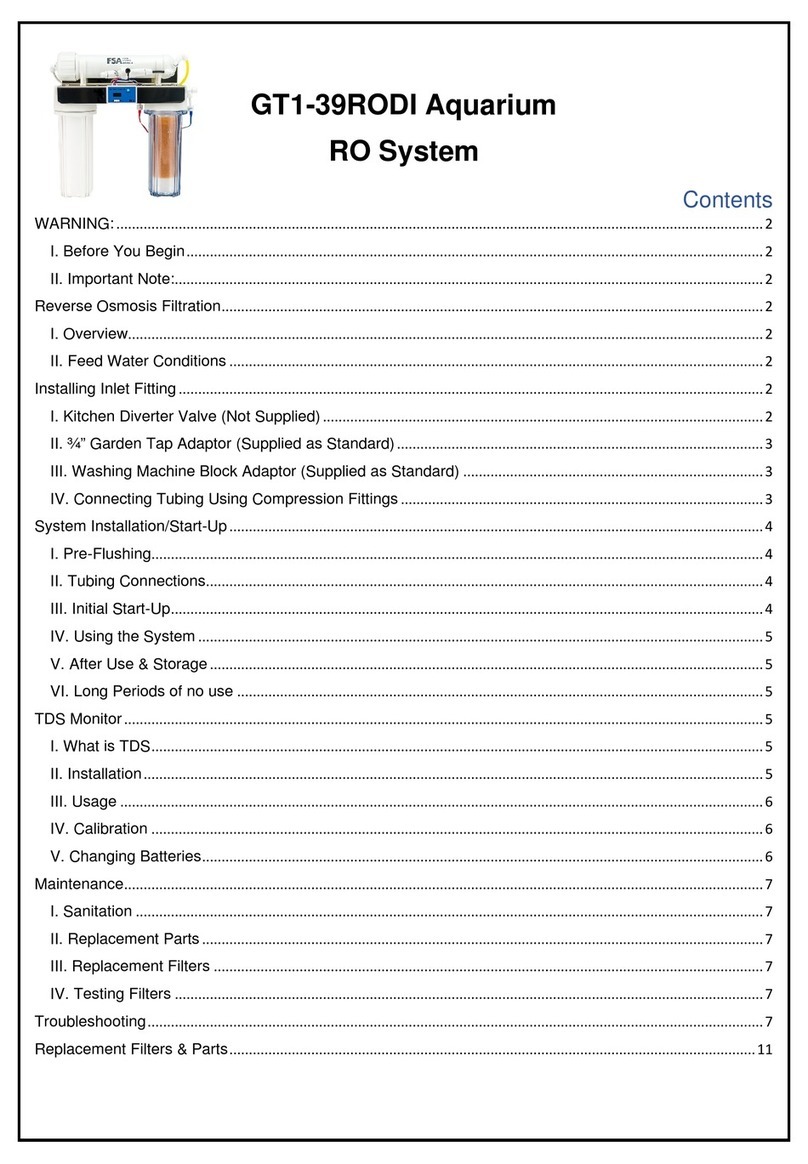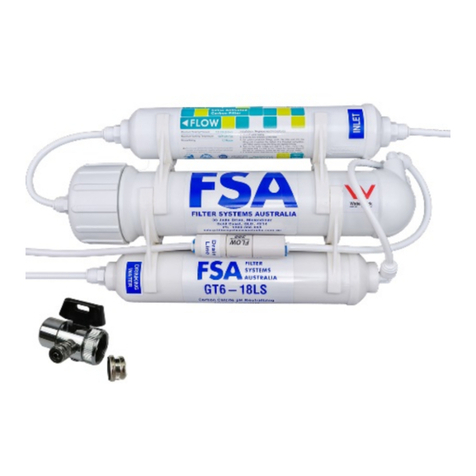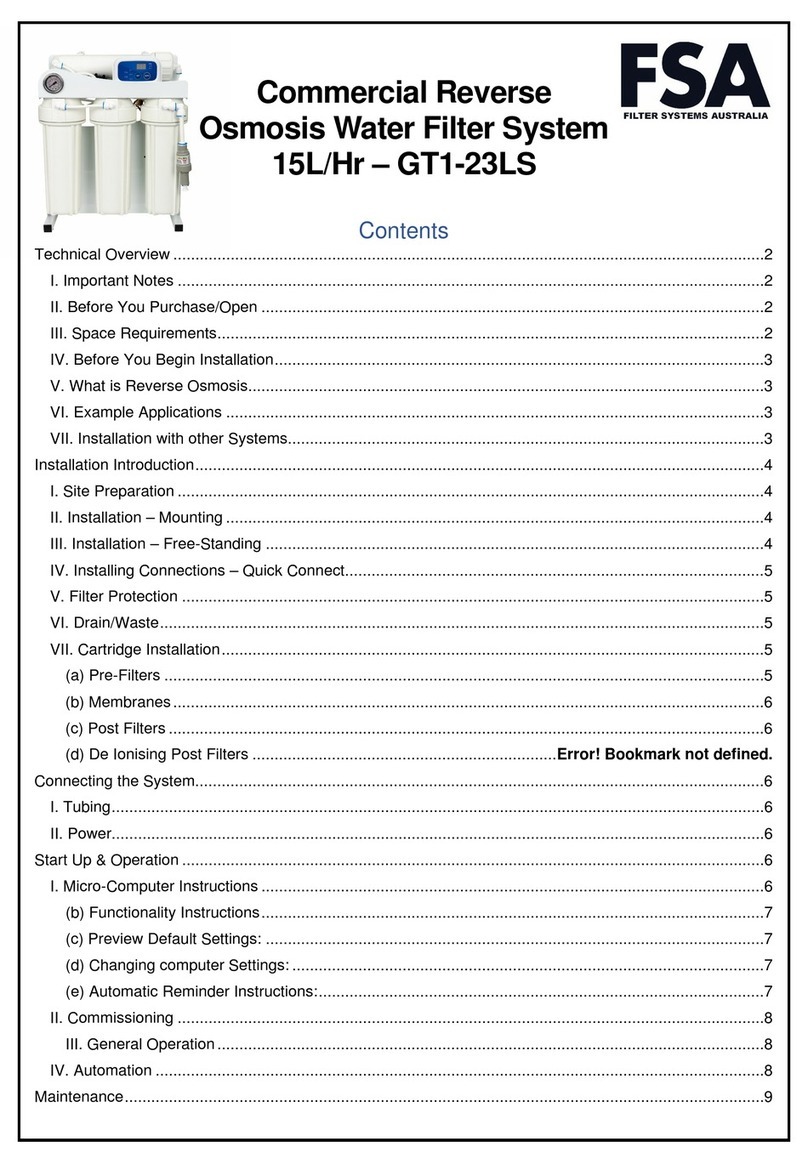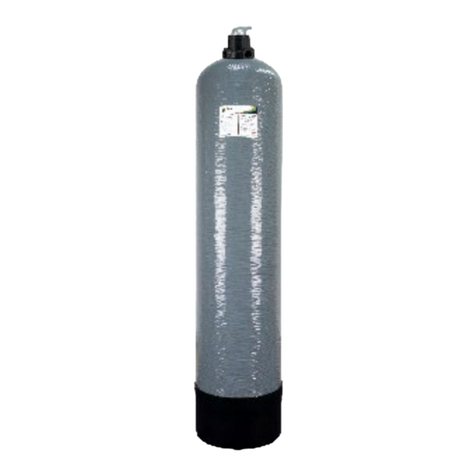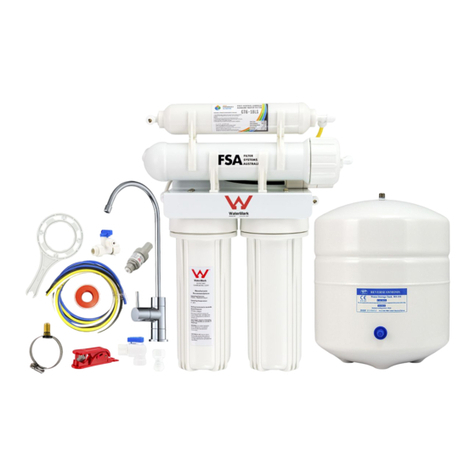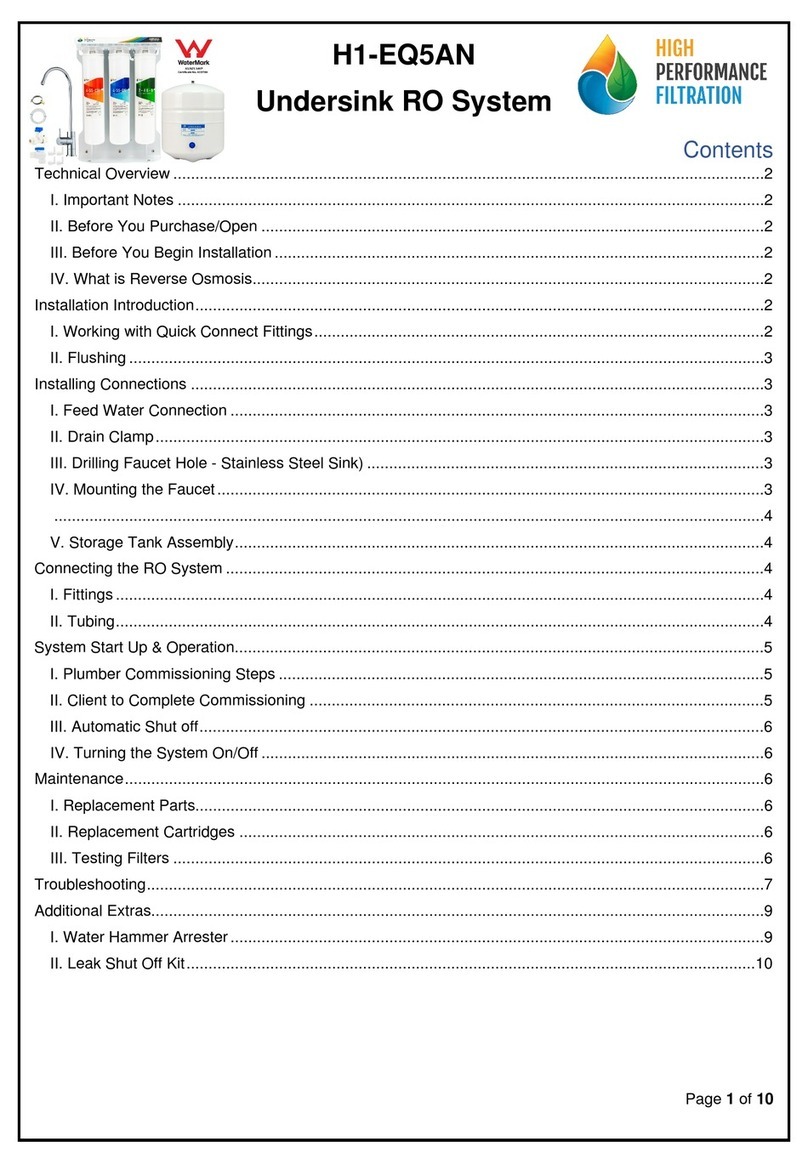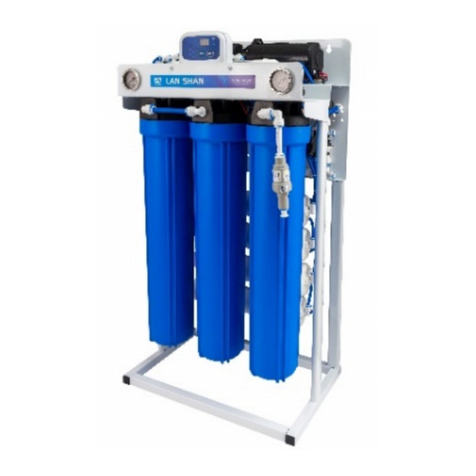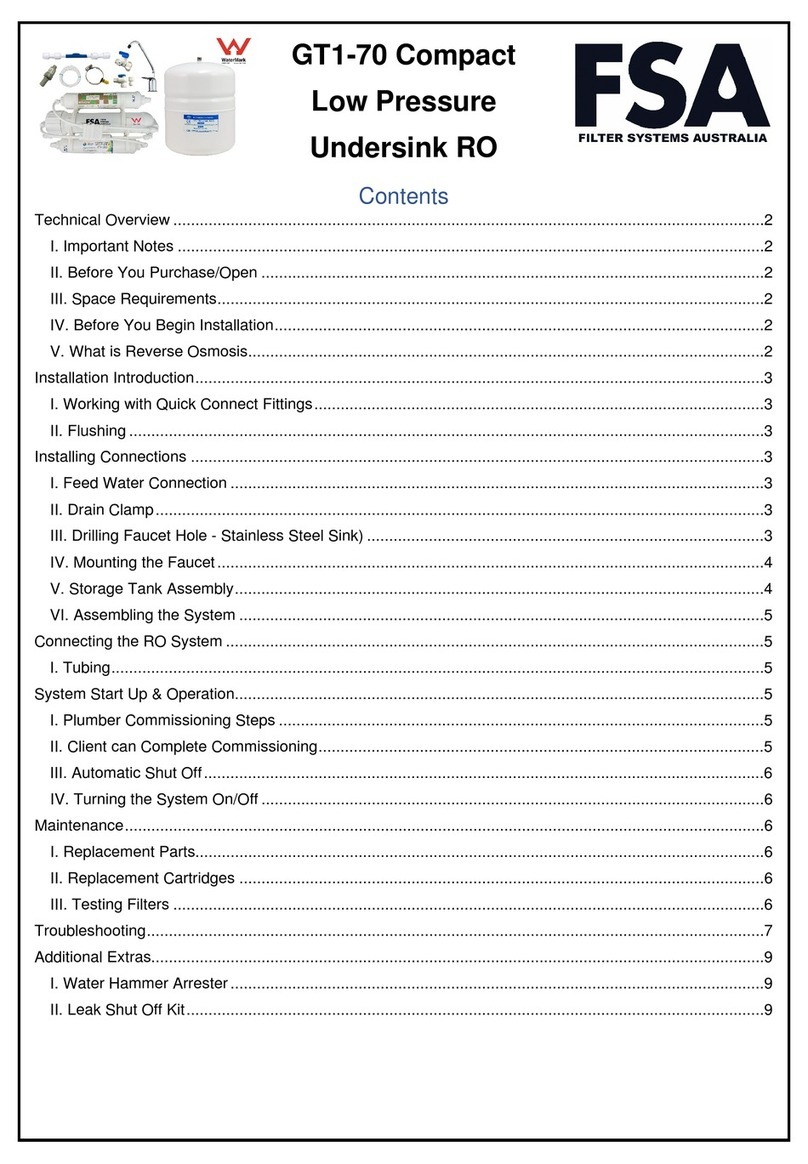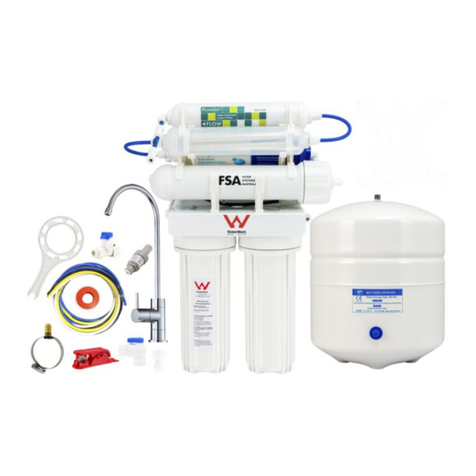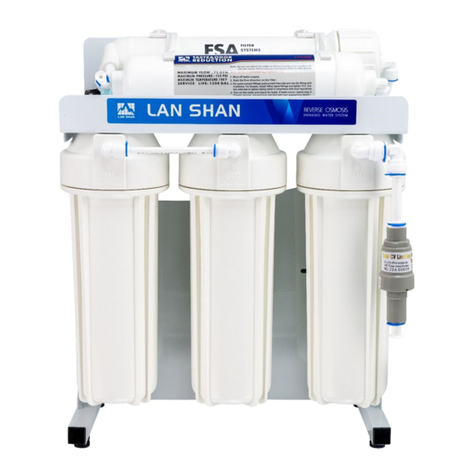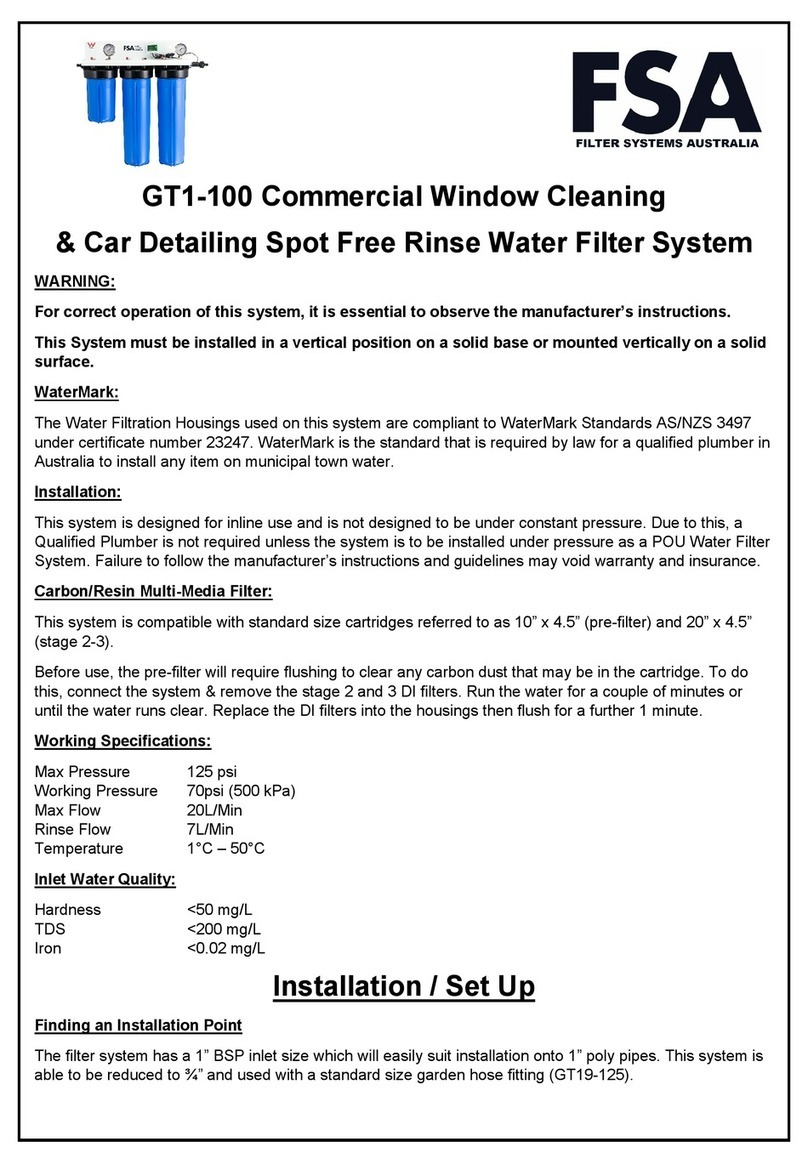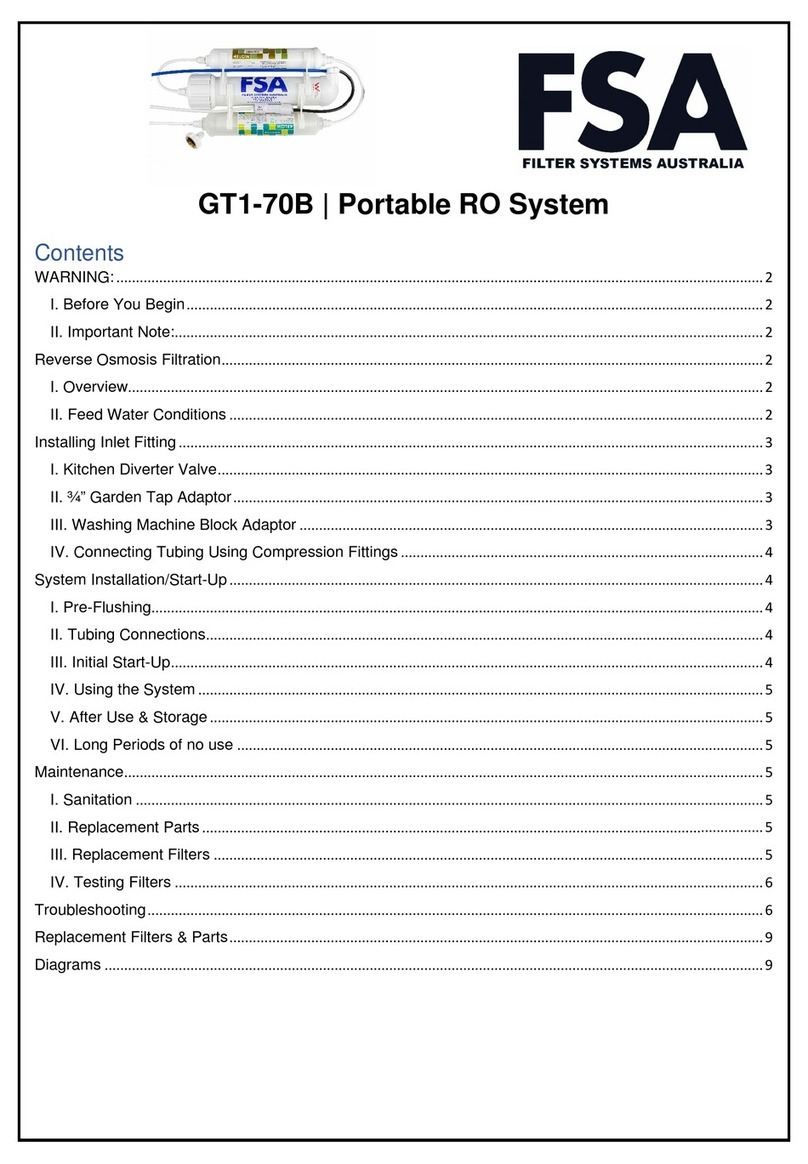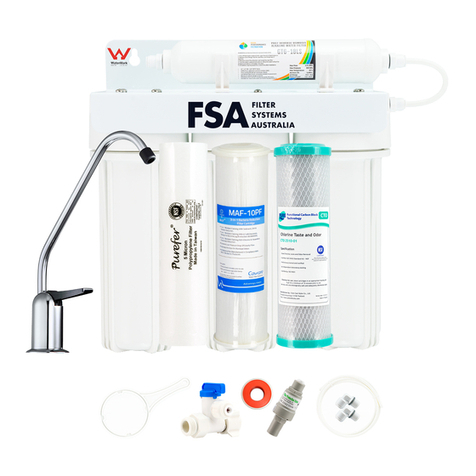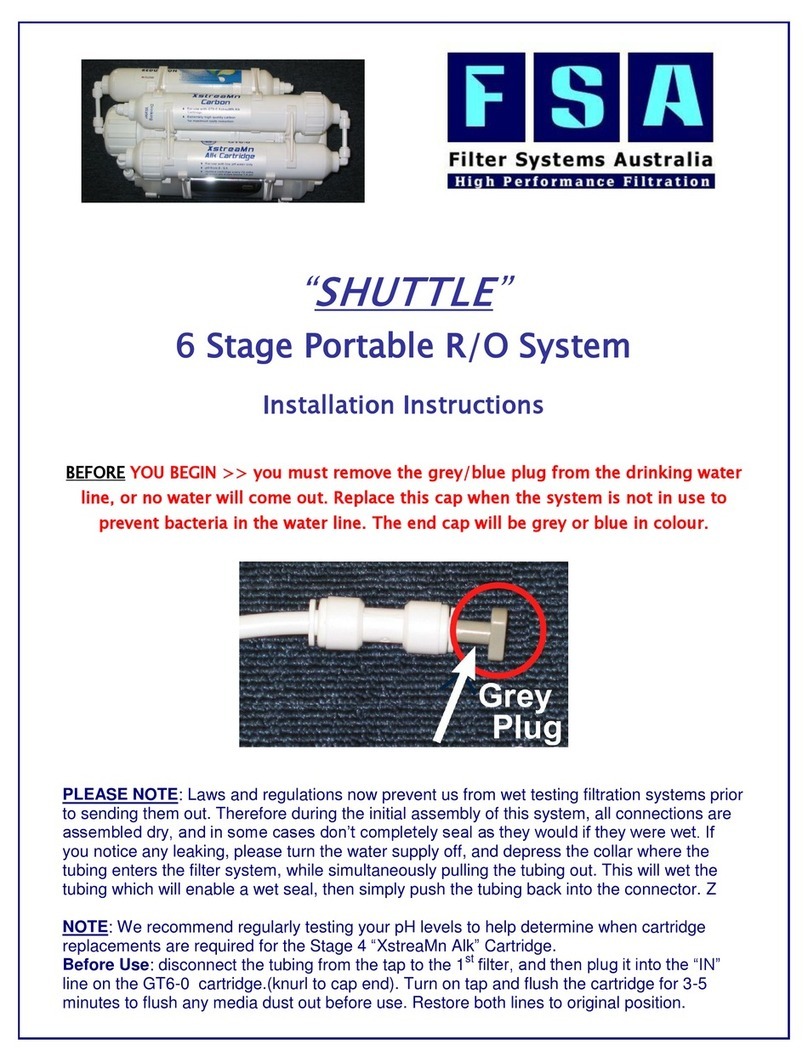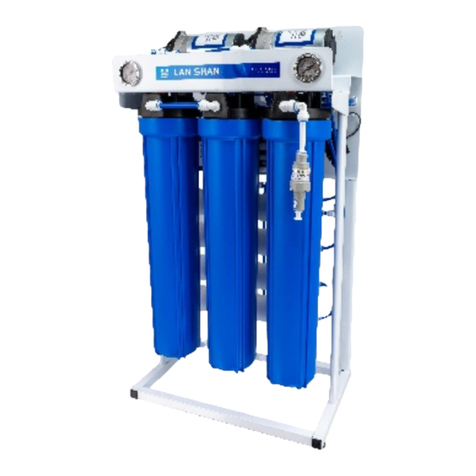
To measure the effectiveness of the RO membrane you will need a TDS/EC test meter. Draw a sample of
tap water (to get your base reading), then collect a sample of water directly off the membrane outlet (before
it goes through any other filters). This is your ‘pure’ water. To calculate the membrane effectiveness, you
will need to subtract the percentage of contaminant reduction from the feed water. E.g. Feed Water
200mg/L TDS – RO Membrane removes 97% (+/-) Therefore, 200 – 97% = 6mg/L. Factors can influence
the final TDS of the water and it will depend upon what is in the feed water to begin with. A membrane is
deemed to be ‘expired’ if the overall reduction rate is <90% (as a general rule). To apply this to the above
example, 200 – 90% = 20mg/L. So, if your test reading was approaching 20mg/L or higher, it would be time
to change the membrane.
For testing the DI filter, use your baseline reading from above. The DI filter should reduce the water to <1
TDS. Replace the DI once it exceeds your desired level.
Troubleshooting
Water Leaking Between fitting
and tubing.
Check all tubing connections by
firmly pushing them into the
fitting. Check that there are no
kinks or any obvious issues. If
the problem persists, remove the
tubing and check for a clean cut
with no burs. Push the tubing
back in and try again. If this does
not work please contact
Water Leaking Between Fitting &
Filter
Fitting not tight enough /
Insufficient Thread Tape /
Damaged Fitting or Filter
If the fitting appears to be not
fully tightened, gradually tighten
the fitting to see If this fixes the
leak. If this does not work,
remove the fitting and check for
any signs of damage either on
the fitting or the female port of
the housing. If there are no
obvious signs of damage, apply
white plumbers’ tape. Use 6
rounds for 1/8” fittings
(membrane housing fittings) and
8 rounds for all other ¼” fittings.
Diverter Valve
1. Damaged/Missing Washer
2. Not Tight Enough
3. Thread is too Short
1. Check the diverter valve to see
if the washer is inside, if it is
damaged it may need replacing –
this is a common size washer
and can be purchased from most
hardware/plumbing stores.
2. If the diverter valve is loose (or
you can easily swivel the fitting
without resistance, the fitting is
not tightened enough. It may feel
like you can’t tighten it anymore
and it just keeps spinning but if
you use a gripping tool (multi
grips) to grab the collar of the
fitting and use your hand to hold
the valve itself steady, you will be
able to further tighten the valve.
The valve is tight enough when
you feel light to moderate
resistance when trying to swivel












